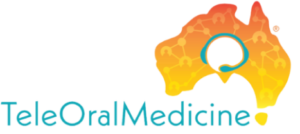Temporomandibular Joint (TMJ) Pain
- Home
- Conditions
- Temporomandibular Joint (TMJ) Pain
Jaw joints, muscles and associated structures are actively involved opening and closing the mouth for chewing, speaking and other functions. The temporomandibular joint (TMJ) is a complex joint that connects the base of your skull to your lower jaw and is just in front of the ear.
The joint is made up of two parts, the condyle and the glenoid fossa with the fibrousarticular disc between them. This disc serves as a shock absorber spreading the jaw forces that occur with jaw function. Temporomandibular disorders (TMD) is a group of conditions that results in pain or dysfunction that affects the TMJs, jaw muscles and/or associated structures.
Signs and Symptoms:
Signs and symptoms that can accompany TMJ pain include:
- Pain in the front of the ear.
- Pain while opening or closing the jaw or chewing.
- Aching pain, discomfort or stiffness of the jaw muscles.
- Headache especially in the morning.
- Jaw clicking, popping, crunching, clunking noises.
- Jaw catching or locking with opening or closing.
- Inability to open the mouth widely.
- Ear fullness or muffled ear sounds.
Causes:
Temporomandibular disorders can develop if:
- The disc slips out of its original position resulting in catching or locking.
- TMJ arthritis.
- Overloading of the jaw muscles.
Risk factors:
The risk factors related to TMD include:
- Direct trauma such as a blow to the jaw.
- Indirect trauma such as a whiplash injury.
- Microtrauma such as teeth grinding or clenching.
- Systemic conditions such as joint hypermobility or rheumatoid arthritis.
- Persistent psychosocial stressors such as childhood trauma, financial stress, relationship issues and work place stress.
Treatments:
Treatment will be based on the diagnosis of specific type of TMD diagnosis and aims to decrease pain and improve function. This may include simple instructions such as a soft diet, avoiding painful jaw function, habit awareness, thermal therapy and jaw exercises.
Other treatments may include:
- Oral appliances to decrease loading onto the TMJs and jaw muscles.
- Physiotherapy which may include ultrasound therapy, acupuncture, manual manipulation and jaw exercises to decrease pain and improve function.
- Medications such as anti-inflammatories and muscle relaxants.
- Injections into the joints or jaw muscles such as cortisone injections, trigger point injections and botulinum toxin injections.
- There are various surgeries available for the TMJs which are reserved for very specific diagnosis and in cases that do not respond to conservative treatments.
When to see a doctor?
It is recommended that you consult a doctor or dentist for treatment if you experience persistent jaw pain or discomfort or if you are unable to fully open or close your jaw.
To consult an Oral Medicine Specialist regarding your TMD, ask your doctor or dentist to refer you to TeleOralMedicine.
